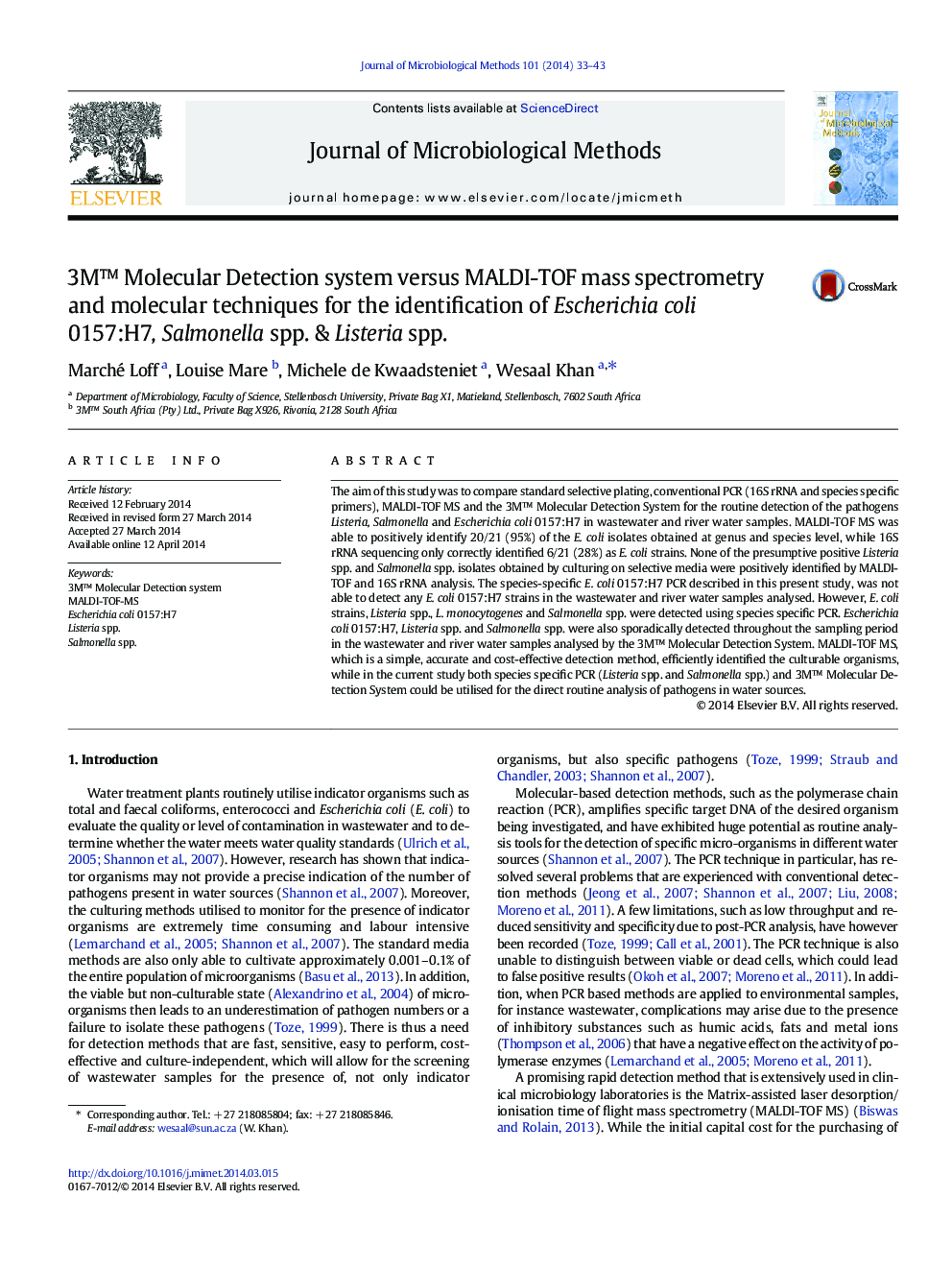| Article ID | Journal | Published Year | Pages | File Type |
|---|---|---|---|---|
| 2089936 | Journal of Microbiological Methods | 2014 | 11 Pages |
•MALDI-TOF MS identified higher percentage of isolates.•3M™ Molecular system comparable to species specific PCR for Listeria.•3M™ Molecular system routinely detected E. coli 0157:H7.
The aim of this study was to compare standard selective plating, conventional PCR (16S rRNA and species specific primers), MALDI-TOF MS and the 3M™ Molecular Detection System for the routine detection of the pathogens Listeria, Salmonella and Escherichia coli 0157:H7 in wastewater and river water samples. MALDI-TOF MS was able to positively identify 20/21 (95%) of the E. coli isolates obtained at genus and species level, while 16S rRNA sequencing only correctly identified 6/21 (28%) as E. coli strains. None of the presumptive positive Listeria spp. and Salmonella spp. isolates obtained by culturing on selective media were positively identified by MALDI-TOF and 16S rRNA analysis. The species-specific E. coli 0157:H7 PCR described in this present study, was not able to detect any E. coli 0157:H7 strains in the wastewater and river water samples analysed. However, E. coli strains, Listeria spp., L. monocytogenes and Salmonella spp. were detected using species specific PCR. Escherichia coli 0157:H7, Listeria spp. and Salmonella spp. were also sporadically detected throughout the sampling period in the wastewater and river water samples analysed by the 3M™ Molecular Detection System. MALDI-TOF MS, which is a simple, accurate and cost-effective detection method, efficiently identified the culturable organisms, while in the current study both species specific PCR (Listeria spp. and Salmonella spp.) and 3M™ Molecular Detection System could be utilised for the direct routine analysis of pathogens in water sources.
